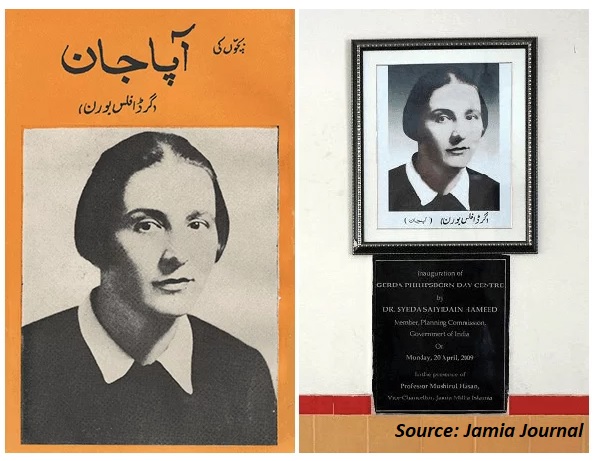Not many would expect the last resting place of a German-born Jewish lady to be the cemetery near Jamia Millia Islamia, resting among the graves of numerous Jamia luminaries. Gerda Philipsborn’s journey from a German Jewess to becoming Jamia’s “Aapa Jaan” is a story of friendship, purpose, and sacrifice. Born in 1895 to a wealthy family in Germany, Philipsborn’s early life was shaped by the societal upheavals of war, industrialization, and rising anti-Semitism. Her life took a significant turn when she befriended three Indian scholars, Zakir Husain, Muhammad Mujeeb, and Abid Husain, in Berlin. These men, deeply involved in India’s freedom movement, shared their vision of establishing an institution dedicated to educating Muslims and promoting unity between Hindus and Muslims. Their ideas deeply resonated with Philipsborn, who understood the pain of oppression and longed for meaningful change.
In 1933, despite the cautions of her friends, Philipsborn left behind the comfort of modern Berlin to join them in India, where they were building Jamia Millia Islamia. The transition was not easy; the cultural and economic contrast between Europe and colonial India was stark. But Philipsborn quickly adapted, becoming a beloved teacher in Jamia’s primary school. Drawing on her experiences in German kindergartens, she made education engaging for the children. Her role soon expanded, and she became the warden of a children’s hostel, where she cared for the students with such devotion that they saw her as their “Aapa Jaan,” or elder sister.
Philipsborn also worked to elevate the role of women in Jamia, encouraging girls and women to participate more actively in society. She contributed to Jamia’s children’s journal, Payam-e Ta’lim, writing articles that promoted women’s interests and gave girls a platform to express themselves. Her contributions went beyond education; she helped the founders of Jamia raise funds, prepare speeches, and offered advice on both teaching and political matters. Her commitment to the institution and its mission was unwavering, even though life in colonial India was a stark contrast to her previous life in Europe.
In 1940, Philipsborn’s work was interrupted when the British, suspicious of Germans during World War II, interned her in a camp. Despite the harsh conditions, she continued to serve her fellow inmates with the same compassion she had shown the children of Jamia. After a year in the camp, she returned to Jamia but was weakened by illness. Her gastric ulcer developed into cancer, yet she remained dedicated to her work until her death in April 1943. Philipsborn’s legacy endures in Jamia, where a hostel and daycare centre is named after her. She will always be remembered as a devoted teacher and a symbol of cross-cultural friendship and commitment to justice.




